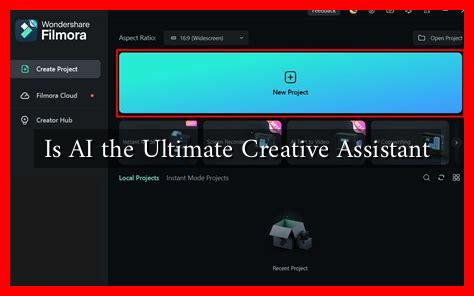-
Table of Contents
Is AI the Ultimate Creative Assistant?
Artificial Intelligence (AI) has made significant strides in recent years, transforming various industries and redefining the boundaries of creativity. From generating art and music to assisting in writing and design, AI tools are increasingly being recognized as valuable creative assistants. But is AI truly the ultimate creative partner, or does it merely serve as a tool that complements human creativity? This article explores the capabilities, limitations, and implications of AI in the creative realm.
The Rise of AI in Creative Fields
AI’s integration into creative fields has been nothing short of revolutionary. With advancements in machine learning and natural language processing, AI systems can now analyze vast amounts of data, learn from patterns, and generate original content. Some notable examples include:
- Art Generation: Tools like DALL-E and DeepArt use neural networks to create stunning visual art based on textual descriptions.
- Music Composition: AI platforms such as AIVA and Amper Music can compose original music tracks in various genres, often indistinguishable from human-created pieces.
- Writing Assistance: AI writing tools like Grammarly and Jasper help writers enhance their work by providing suggestions for grammar, style, and even content generation.
How AI Enhances Creativity
AI serves as a powerful ally for creative professionals, offering several advantages that can enhance the creative process:
- Idea Generation: AI can analyze trends and generate ideas that may not have been considered by human creators. For instance, AI can suggest plot twists for a screenplay or unique themes for a marketing campaign.
- Efficiency: By automating repetitive tasks, AI allows creators to focus on higher-level thinking and innovation. This can lead to faster project completion and more time for exploration and experimentation.
- Personalization: AI can analyze user preferences and behaviors to create tailored content, making it easier for creators to connect with their audience.
Case Studies: AI in Action
Several organizations and individuals have successfully integrated AI into their creative processes, showcasing its potential:
- OpenAI’s GPT-3: This language model has been used by writers and marketers to generate articles, advertisements, and even poetry, demonstrating its versatility in content creation.
- Refik Anadol: A media artist who uses AI to create immersive installations, Anadol’s work exemplifies how AI can be harnessed to produce innovative art that engages audiences in new ways.
- AI in Film: The film industry is exploring AI for script analysis and audience prediction, with companies like ScriptBook using AI to evaluate scripts and forecast box office success.
The Limitations of AI in Creativity
Despite its impressive capabilities, AI is not without limitations. Understanding these constraints is crucial for evaluating its role as a creative assistant:
- Lack of Emotional Depth: AI lacks genuine emotions and experiences, which can limit its ability to create work that resonates on a human level.
- Dependence on Data: AI’s creativity is often constrained by the data it has been trained on, which can lead to repetitive or derivative outputs.
- Ethical Concerns: The use of AI in creative fields raises questions about authorship, copyright, and the potential for job displacement among creative professionals.
Conclusion: A Collaborative Future
AI is undoubtedly a powerful tool that can enhance creativity and streamline the creative process. However, it is essential to recognize that AI should be viewed as a collaborator rather than a replacement for human creativity. The most successful creative endeavors will likely emerge from the synergy between human intuition and AI’s analytical capabilities.
As we continue to explore the potential of AI in creative fields, it is crucial to address its limitations and ethical implications. By fostering a collaborative relationship between humans and AI, we can unlock new avenues of creativity and innovation, paving the way for a future where both can thrive together.
For more insights on the intersection of AI and creativity, you can visit Forbes.

